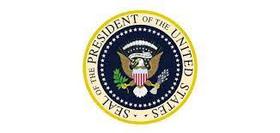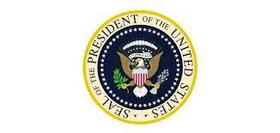The purpose of this article is not to cast blame. Instead, I want to highlight the disturbing trend that many of us have heard and read about: enrollment in American Catholic schools has declined severely over the past 50 years.
The following is quoted directly from the National Catholic Education Association's Annual Statistical Report on Schools, Enrollment, and Staffing.
"U. S. Catholic school enrollment reached its peak during the early 1960s when there were more than 5.2 million students in almost thirteen thousand schools across the nation. The 1970s and 1980s saw a steep decline in both the number of schools and students. By 1990, there were approximately 2.5 million students in 8,719 schools. From the mid 1990s though 2000, there was a steady enrollment increase (1.3%) despite continued closings of schools. Between the 2000 and the 2011 school years, 1,755 schools were reported closed or consolidated (21.5%). The number of students declined by 587,166 (22.1 %). The most seriously impacted have been elementary schools."
This short video gives us an overview of the issue.
Personally, it saddens me to see any private school in decline. It is even worse to discover that schools have closed. But the sheer magnitude of these numbers is just plain scary. Let's examine some of the reasons why Catholic education finds itself in this state.
The Economy
The economy has been a major factor in the decline in the number of Catholic schools. The Great Recession of 2008 cost millions of people their jobs. As a result, when parents struggle just to make ends meet, a private school education becomes unaffordable and out of the question. Historically, Roman Catholic parochial and high school educations have been some of the most affordable private school educations available. Fewer students mean more seats available. More seats available means less tuition income. It is a vicious cycle not easily broken. Once the cycle starts, it becomes very difficult to turn around.
Back in the 1950s, nuns staffed Catholic schools. These wonderful teachers were also paid very little. Consequently, schools could keep their tuition low. Unfortunately, as the number of nuns declined, schools had to hire lay teachers whose compensation was more than the religious they replaced.
Changing Social Customs
Church membership nationwide in just about every denomination has been on a decline for decades. The Catholic Church has been particularly hard hit as it faced changing demographics in thousands of parishes. Whereas 50 years ago, Sunday masses were well-attended and parishes seemed to flourish, nowadays, the neighborhoods have changed, leaving small, aging congregations struggling to keep the doors of their beloved old church open. Soaring energy and maintenance costs and a lack of priests have further exacerbated the problem.
The Child Abuse Settlements
The scandals that have rocked the American Catholic Church from 2000-2018 effectively drained the coffers of dozens of Catholic dioceses, requiring enormous settlements to bring a conclusion to the legal process. Church property and other tangible assets were sold to raise money to fund the settlements. Hundreds of schools that had been kept afloat with diocesan support had their financial lifeline cut off. The diocesan and archdiocesan authorities had no other choice.
The Way Forward
I know that Catholic education will survive long term. In my opinion, we have seen a winnowing process in which schools that already had financial and enrollment issues have been forced to face up to those issues. If those schools found answers to their problems, they survived. If they didn't, they closed their doors. In many cases, diocesan authorities consolidated several schools which had low student populations into one larger school. The schools that are left are the ones that have weathered all the economic and cultural onslaughts that have been thrown at them over the past decade. They will probably continue to survive and find new ways to thrive. As the following video shows, schools are proactively reaching out to their communities.
Education has been a major focus of the Catholic Church for the better part of two millennia. I do not see that education focus changing at all. Parents who want a Catholic education for their children will continue to find ways to accomplish that objective. The schools will learn to adapt to changing times by marketing themselves more successfully and offering academic courses that produce graduates who can succeed in life. Catholic schools will emerge as a leading force in American education once again, only this time they will be leaner, more market savvy, and on a sounder financial footing.
The distinction between parochial and schools run by religious orders.
It is important to make the distinction between the typical K-8 parochial school and their more affluent cousins, the high schools run by the various religious orders of the Roman Catholic Church. The parochial schools have been hardest hit by all the factors which I have mentioned above. On the other hand, the private schools were run by orders such as the Jesuits, the Marists, the Ursulines, the Lasallians, the Benedictines, and the Dominicans, to name just a few of the many Roman Catholic religious orders. The reason the schools run by religious orders are having a somewhat easier time of it has to do with their funding. Most of these schools were established decades ago. They have benefited from having loyal, financially comfortable alumni who support the schools. These schools also benefit from having modest endowments. They also charge tuition, which is usually fairly close to market rates. As a result, schools run by Roman Catholic religious orders have survived the financial woes with which their parochial school cousins have been afflicted. The following video illustrates my point.
What can you and I do? We can support our schools. Call the school if you have the means to make a substantial gift to your alma mater. Let it know that you want to help because you believe in the value of a Catholic education and what that education has done for you. Perhaps supporting your alma mater with an Annual Fund contribution works best for you. You and your classmates should make every effort to support the schools that gave you such a good start in life.
Questions? Contact us on Facebook. @privateschoolreview























